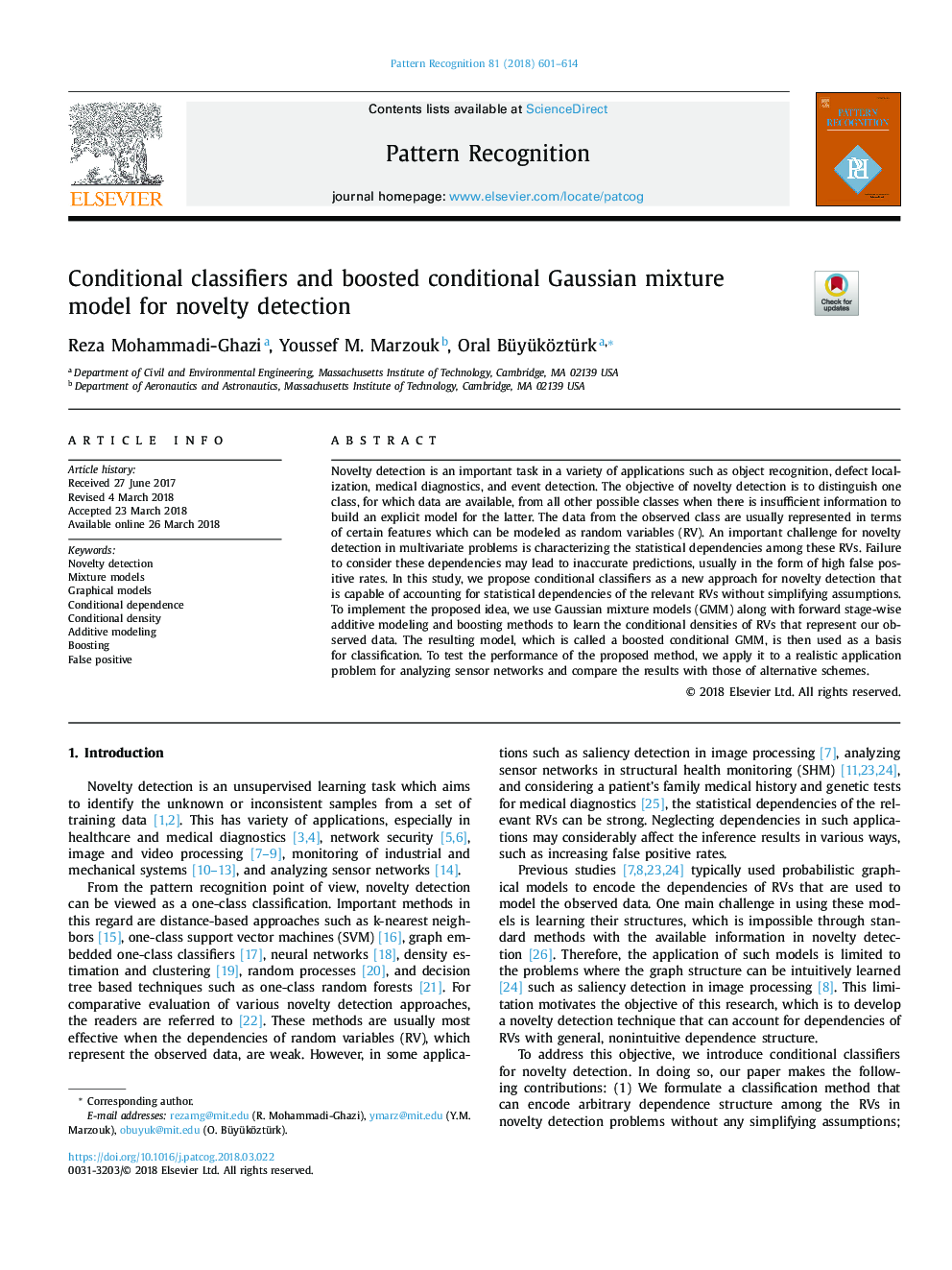| Article ID | Journal | Published Year | Pages | File Type |
|---|---|---|---|---|
| 6938844 | Pattern Recognition | 2018 | 14 Pages |
Abstract
Novelty detection is an important task in a variety of applications such as object recognition, defect localization, medical diagnostics, and event detection. The objective of novelty detection is to distinguish one class, for which data are available, from all other possible classes when there is insufficient information to build an explicit model for the latter. The data from the observed class are usually represented in terms of certain features which can be modeled as random variables (RV). An important challenge for novelty detection in multivariate problems is characterizing the statistical dependencies among these RVs. Failure to consider these dependencies may lead to inaccurate predictions, usually in the form of high false positive rates. In this study, we propose conditional classifiers as a new approach for novelty detection that is capable of accounting for statistical dependencies of the relevant RVs without simplifying assumptions. To implement the proposed idea, we use Gaussian mixture models (GMM) along with forward stage-wise additive modeling and boosting methods to learn the conditional densities of RVs that represent our observed data. The resulting model, which is called a boosted conditional GMM, is then used as a basis for classification. To test the performance of the proposed method, we apply it to a realistic application problem for analyzing sensor networks and compare the results with those of alternative schemes.
Keywords
Related Topics
Physical Sciences and Engineering
Computer Science
Computer Vision and Pattern Recognition
Authors
Reza Mohammadi-Ghazi, Youssef M. Marzouk, Oral Büyüköztürk,
